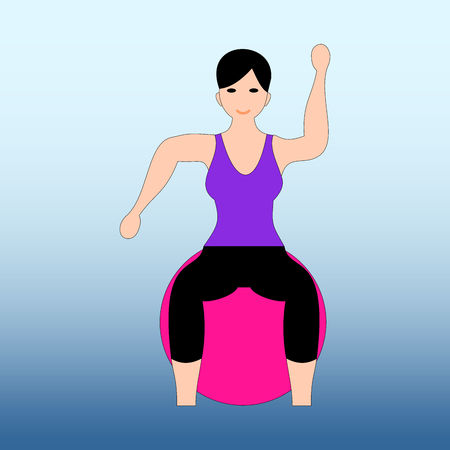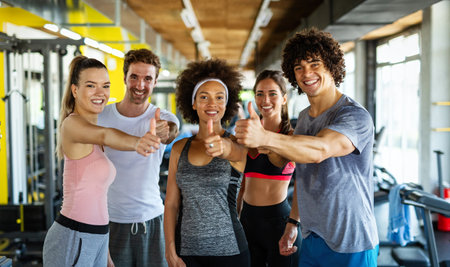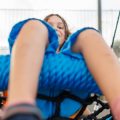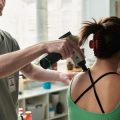1. Understanding Sport-Specific Demands and Injuries
When it comes to sports rehabilitation and return-to-play protocols for American athletes, it’s crucial to recognize that each sport brings its own unique set of physical and biomechanical demands. Popular American sports like football, basketball, baseball, and soccer challenge the body in different ways. Knowing these differences helps therapists and trainers create effective, targeted rehab programs.
Physical and Biomechanical Demands in Major American Sports
| Sport | Main Physical Demands | Key Movements |
|---|---|---|
| Football | Power, explosive speed, high-impact collisions | Sprinting, tackling, blocking, rapid changes of direction |
| Basketball | Agility, jumping ability, endurance | Jumping, quick pivots, sprints, lateral movement |
| Baseball | Rotational power, hand-eye coordination | Throwing, batting (swinging), base running, fielding |
| Soccer | Endurance, agility, lower-body strength | Sprinting, kicking, cutting movements, sudden stops/starts |
Common Injury Patterns by Sport
| Sport | Frequent Injuries | Main Causes |
|---|---|---|
| Football | Knee ligament tears (ACL/MCL), concussions, shoulder dislocations, ankle sprains | Contact/collisions, sudden direction changes, overuse |
| Basketball | Ankle sprains, ACL injuries, patellar tendinitis (“jumper’s knee”), finger fractures/dislocations | Jumping/landing awkwardly, sharp pivots/turns, player contact |
| Baseball | Rotator cuff strains/tears, UCL injuries (“Tommy John” elbow), hamstring pulls, hand/wrist fractures from impact with ball/bat/pitch or sliding bases | Repetitive throwing motions, batting swings, sudden sprints/slides |
| Soccer | Ankle sprains/strains, ACL/MCL tears, hamstring/groin pulls, contusions from contact | Tackling/contact with other players or ground, rapid cuts/stops |
Key Considerations for Prevention and Rehab Programs
- Individualized Exercise Selection: Rehab exercises should reflect the athlete’s sport-specific movement patterns. For example, a football linebacker needs different drills than a baseball pitcher.
- Focus on Movement Quality: Proper form during exercises reduces risk of re-injury. Emphasize controlled landings in basketball or accurate cutting in soccer.
- Progressive Loading: Gradually increase intensity to safely rebuild strength and power without overloading healing tissues.
- Cognitive and Reaction Training: In fast-paced sports like football and basketball, reaction drills help prepare athletes for real-game scenarios.
- Eccentric Strengthening: Especially important in sports with lots of sprinting or jumping (basketball/soccer) to protect against muscle strains.
The Bottom Line for Athletes and Coaches:
- Individualized Exercise Selection: Rehab exercises should reflect the athlete’s sport-specific movement patterns. For example, a football linebacker needs different drills than a baseball pitcher.
- Focus on Movement Quality: Proper form during exercises reduces risk of re-injury. Emphasize controlled landings in basketball or accurate cutting in soccer.
- Progressive Loading: Gradually increase intensity to safely rebuild strength and power without overloading healing tissues.
- Cognitive and Reaction Training: In fast-paced sports like football and basketball, reaction drills help prepare athletes for real-game scenarios.
- Eccentric Strengthening: Especially important in sports with lots of sprinting or jumping (basketball/soccer) to protect against muscle strains.
The Bottom Line for Athletes and Coaches:
No two sports—and no two athletes—are exactly the same. A successful rehab program always takes into account the specific physical challenges and common injury risks of the athlete’s sport. By understanding these key differences and focusing on targeted exercise selection and injury prevention strategies, both athletes and coaches can help ensure a safe return to play.
2. Assessment and Goal Setting for Athletes
Comprehensive Evaluation Process
When an athlete is injured, a thorough assessment is the first step in creating a successful rehab and return-to-play plan. This evaluation goes beyond just checking the injured area; it takes into account the whole body, movement patterns, and specific sport demands. In the United States, sports medicine professionals often use a combination of functional movement screenings and sport-specific performance tests to get a clear picture of an athlete’s needs.
Key Components of Athlete Assessment
| Assessment Type | Description | Purpose |
|---|---|---|
| Functional Movement Screening (FMS) | A series of basic movements to assess mobility, stability, and movement quality (e.g., squats, lunges, reaching). | Identifies imbalances or weaknesses that may contribute to injury or limit performance. |
| Sport-Specific Performance Tests | Evaluations tailored to the athlete’s sport (e.g., shuttle runs for soccer, vertical jump for basketball). | Measures readiness to return to play by comparing current abilities with pre-injury or normative data. |
| Physical Examination | Hands-on assessment by a sports physical therapist or athletic trainer. | Checks joint integrity, muscle strength, flexibility, and pain response. |
| Medical Imaging (if needed) | X-rays, MRI, or ultrasound as ordered by a physician. | Provides detailed information about bone or soft tissue injuries. |
Collaborative Goal Setting
The next step is setting clear goals that are meaningful for the athlete. In American sports culture, this process is a team effort involving the athlete, their family, coaches, medical staff, and sometimes even school or club administrators. Everyone works together to set short-term and long-term goals that are specific, measurable, and achievable.
Steps in Collaborative Goal Setting
- Initial Discussion: The rehab team meets with the athlete to talk about their personal goals and expectations for recovery and return to play.
- SMART Goals: Goals should be Specific, Measurable, Achievable, Relevant, and Time-bound. For example: “Regain full range of motion in the right knee within four weeks” or “Return to non-contact practice drills by week six.”
- Regular Check-Ins: Progress is reviewed weekly or biweekly. Goals can be adjusted based on how the athlete responds to treatment.
- Stakeholder Updates: Coaches and families are kept in the loop so everyone supports the rehab plan and understands each stage of progress.
Sample Goal Setting Table
| Goal Type | Example Goal | Timeline | Who’s Involved? |
|---|---|---|---|
| Short-Term Goal | No swelling after workouts | 2 weeks | Athlete & Therapist |
| Mid-Term Goal | Sprint at 80% speed without pain | 6 weeks | Athlete, Coach & Rehab Team |
| Long-Term Goal | Return to competitive games at pre-injury level | 12+ weeks (varies) | Athlete & Full Support Team |
This comprehensive assessment and goal-setting process ensures every rehab program is tailored specifically for the individual athlete—helping them recover safely while preparing for a confident return to their sport.

3. Designing Therapeutic Exercise Programs
Building a Personalized Rehab Plan for Athletes
When working with American athletes, designing a sports-specific therapeutic exercise program means more than just getting someone back on their feet. It’s about creating a custom plan that targets the unique demands of their sport while addressing their individual needs and recovery goals. Here’s how we build these programs step by step:
Key Components of a Sports-Specific Program
| Component | Purpose | Example Activities |
|---|---|---|
| Strength | Restore muscle power and support injured areas | Resistance bands, free weights, bodyweight exercises (like squats or push-ups) |
| Flexibility | Improve range of motion and prevent stiffness | Static and dynamic stretching, yoga-inspired movements |
| Balance | Enhance stability and coordination for sport-specific actions | Bosu ball drills, single-leg stands, agility ladders |
| Sport-Specific Movements | Mimic the actual motions required in the athlete’s sport | Throwing drills for baseball players, cutting drills for soccer or football, jump training for basketball |
The Process: Step by Step
- Assessment: Evaluate the athlete’s injury, physical abilities, and the specific requirements of their sport.
- Goal Setting: Work with the athlete to set realistic short-term and long-term goals based on their sport calendar.
- Program Design: Create a balanced routine that combines strength, flexibility, balance, and sport-specific drills.
- Periodization: Structure the program into phases (rehab, build-up, return-to-play) so intensity ramps up safely.
- Progression: Gradually increase difficulty—heavier weights, faster speeds, or more complex movements as tolerated.
- Adaptation: Adjust exercises weekly or bi-weekly depending on pain levels, progress, and feedback from the athlete and medical team.
Strategies for Periodization and Progression
A good rehab plan uses periodization, meaning it breaks recovery into blocks to avoid burnout and allow proper healing. For example:
| Phase | Main Focus | Typical Activities |
|---|---|---|
| Early Rehab Phase | Pain control, gentle movement | Icing, gentle range-of-motion exercises, light isometrics |
| Mid Rehab Phase | Restore strength & flexibility, introduce balance work | Theraband exercises, stretching routines, simple balance drills |
| Late Rehab/Pre-Return Phase | Add sport-specific skills under supervision | Sprinting drills for track athletes, dribbling for basketball players, tackling practice for football players (non-contact at first) |
| Return-to-Play Phase | Mimic game intensity & complexity under controlled conditions before full return to competition | Full-speed scrimmages, reactive agility drills, simulated game scenarios |
Pacing Progression & Adaptation to Individual Needs
No two athletes recover the same way. Some may bounce back fast; others need more time. That’s why constant communication between the athlete, coaches, doctors, and therapists is key. If an exercise causes pain or seems too easy, we adjust right away—maybe by modifying reps/sets or switching out exercises entirely.
Cultural Relevance: American Sports Contexts
Athletes in the U.S. play a wide range of sports—from football to baseball to gymnastics—so our rehab programs must reflect the physical demands and culture of each sport. For example:
- A high school football player might need extra neck strengthening due to contact risk.
- A college soccer player may focus more on lateral movement and endurance.
This personalized approach helps athletes regain confidence in their bodies and return to play stronger—and safer—than before.
4. Return-to-Play Criteria and Decision-Making
Understanding Return-to-Play (RTP) Decisions in American Sports
When it comes to getting American athletes safely back into their sports after an injury, return-to-play (RTP) decisions are a big deal. These decisions are made by carefully reviewing both objective and subjective criteria, using evidence-based protocols, and involving everyone from healthcare professionals to coaches and the athlete themselves. Let’s break down what goes into making sure an athlete is truly ready to return.
Objective vs Subjective Criteria for RTP
Both objective (measurable) and subjective (reported by the athlete) criteria are used to assess readiness. Here’s a simple overview:
| Type | Examples | Description |
|---|---|---|
| Objective Criteria | Strength tests, range of motion, functional movement screening, hop tests, balance assessments | These are measurable outcomes used by physical therapists or athletic trainers to compare the injured side with the uninjured side or established norms. |
| Subjective Criteria | Pain levels, confidence in movement, fear of reinjury, reported fatigue | This information comes directly from how the athlete feels and their personal experience during rehab and sport-specific drills. |
Evidence-Based RTP Protocols and Clearance Benchmarks
In the United States, RTP protocols are designed using current research and expert consensus. These protocols usually include:
- Athlete demonstrates full pain-free range of motion.
- Strength and functional performance at least 90% of the non-injured side.
- No swelling or instability during sport-specific movements.
- Athlete successfully completes progressive functional tests relevant to their sport (like cutting drills for football or jump landings for basketball).
- Mental readiness assessed with validated scales (such as the ACL-RSI for knee injuries).
Here’s a quick look at some common benchmarks:
| Sport | Key Functional Test Example | Passing Benchmark |
|---|---|---|
| Football | T-Test Agility Drill | <10% difference between sides; no pain or hesitation |
| Basketball | Single-Leg Hop Test | >90% distance compared to uninjured leg; stable landing |
| Soccer | Lateral Shuffle Drills | No limping or favoring one side; speed within 10% of pre-injury baseline |
| Baseball/Softball (Throwers) | Pain-Free Throwing Program Progression | No pain on throws at game intensity; normal throwing mechanics observed by coach/trainer |
The Team Approach: Collaboration is Key!
A safe return to play is never just a solo decision. In America, it’s all about teamwork! Here’s who’s involved:
- Athletes: Honest communication about symptoms and confidence levels is essential.
- Physical Therapists & Athletic Trainers: They do the testing, monitor progress, and guide exercise progression.
- Team Physicians/Sports Medicine Doctors: Provide medical clearance based on evidence-based protocols.
- Coaches: Support gradual reintegration into practice and competition while respecting restrictions.
- Parents/Guardians (for youth athletes): Encourage open dialogue and advocate for safety over rushing back too soon.
The Bottom Line: Safety First, Performance Next!
The ultimate goal is not just getting athletes back in the game quickly—but making sure they’re physically and mentally ready for the demands of their sport. By following clear criteria, using evidence-based protocols, and working together as a team, American athletes can return stronger and safer than ever before.
5. Prevention, Education, and Long-Term Athlete Wellbeing
For American athletes, staying healthy is just as important as getting back in the game. Sports-specific therapeutic exercise programs arent only about fixing injuries—they also focus on keeping athletes strong and safe for the long haul. Let’s break down why injury prevention, ongoing education, and a supportive team culture matter so much in the U.S. sports scene.
Why Injury Prevention Matters
Preventing injuries before they happen saves time, money, and careers. In sports like football, basketball, baseball, and soccer—where high-impact movements are common—proactive measures can make all the difference. Teams that invest in prevention programs often see fewer injuries and better performance throughout the season.
Common Elements of Effective Injury Prevention Programs
| Program Element | Description | Example in U.S. Sports |
|---|---|---|
| Dynamic Warm-Ups | Prepares muscles and joints for activity | High school football teams using agility ladders before practice |
| Strength Training | Builds muscle to support joints and reduce risk | Collegiate basketball players focusing on core stability exercises |
| Flexibility Work | Keeps muscles limber and ready for movement | Youth soccer teams practicing dynamic stretching routines |
| Neuromuscular Training | Improves balance and control to prevent falls or twists | Baseball players doing balance drills during preseason workouts |
| Education Sessions | Teaches athletes about safe techniques and self-care | Athletic trainers giving concussion awareness talks at training camps |
The Power of Ongoing Athlete Education
Athletes who understand their bodies—and their risks—are more likely to stay healthy. Regular education helps everyone from youth leagues to pros recognize early warning signs of injury, use correct form, and appreciate the value of recovery days. In the U.S., many schools and clubs now include workshops or quick clinics covering nutrition, hydration, mental health, and safe playing techniques.
Cultivating a Culture of Health Within Teams
In America’s competitive sports environment, fostering a team culture that values health over short-term wins is crucial. Coaches and staff play a big role by encouraging open communication about pain or fatigue, prioritizing rest when needed, and celebrating smart choices—not just tough performances.
Strategies for Supporting Long-Term Athletic Development & Wellness
- Individualized Exercise Plans: Adjust training loads based on age, skill level, and sport demands.
- Mental Health Support: Provide access to sports psychologists or counselors familiar with athlete needs.
- Lifestyle Coaching: Offer guidance on sleep habits, nutrition plans, and stress management tailored for busy student-athletes or professionals.
- Crossover Skills: Encourage participation in multiple sports to develop well-rounded athletic abilities and reduce burnout risks.
- Team Workshops: Schedule regular sessions on topics like injury prevention, mindfulness, or leadership skills.
Athlete wellbeing isn’t just about physical rehab—it’s about building habits that keep American athletes thriving both on and off the field for years to come.


